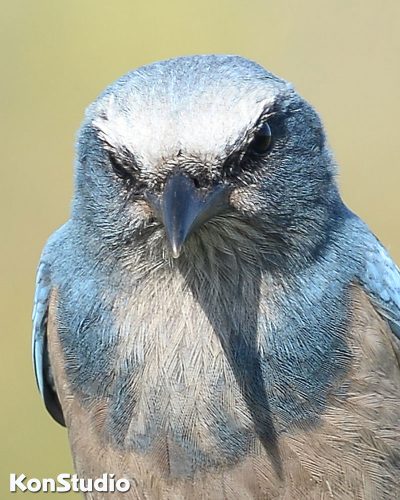Florida Scrub-jays (Aphelocoma coerulescens) is the only species of birds endemic to Florida. These social birds are charismatic, vocal, and friendly. They thrive in sand pine and xeric oak scrub, scrubby flatwoods, sand dunes, and sandy deposits along rivers. Scrub-jays dine on lizards, toads, frogs, mice, insects, and bird eggs. Acorns add protein, and Scrub-jays have been known to bury some to be used during the winter months.
Florida Scrub-jays are cooperative breeders. Both the mom and dad, as well as grown offspring, feed and protect the young. Breeding takes place from March through June. Nests are built from palmetto fibers and twigs and are only 3-10′ above the ground. An average clutch of 2-5 eggs produces new chicks in about 18 days. The babies fledge in another 18 days and remain with their family for a year.
A scrub-jay family lives in a 24-acre area. The family will take turns being the “look-out” bird while the rest forage for food. If a predatory bird such as a hawk is sighted, the “look-out” bird will call to the family, and they will all take cover. If the threat is at ground level, the family may join together in attacking a snake or other predator.
Sadly, Florida Scrub-jays have been declared Threatened under the Endangered Species Act and classified as Vulnerable to Extinction by the International Union for Conservation of Nature. There are only about 8,000 Scrub-Jays left in Florida. The U.S. Migratory Bird Treaty Act protects Florida Scrub-jays.
Over the last 200 years, humans have claimed Scrub-jays well-drained habitats for development and agriculture. A history of fire suppression caused much of their remaining habitats to become overgrown and unlivable. Because development has caused forests to become fragmented, when young birds leave their family home, they have a hard time finding a suitable habitat where they can settle down and start their own family. This fragmentation has caused isolation between families, and thus, each group of Scrub-jays has adapted by developing their own unique vocalizations.




